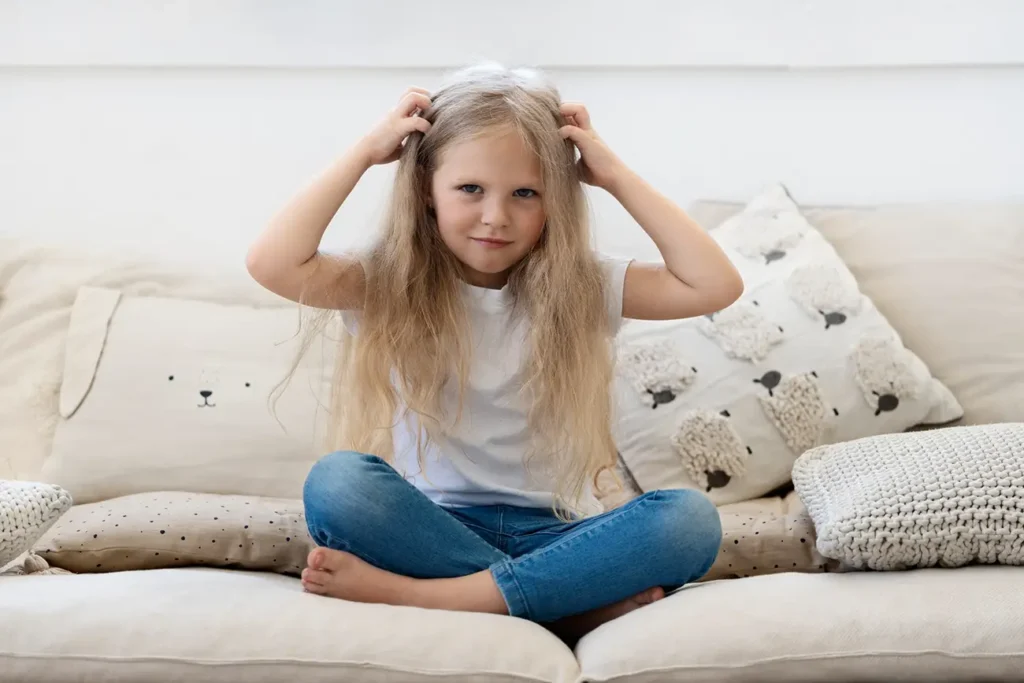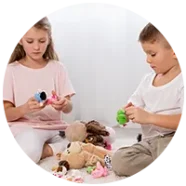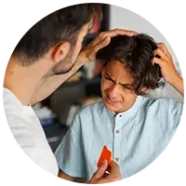Who can get lice?

Signs & symptomsof a Lice Infestation
Up to 70-80% of people with head lice experience itching due to allergic reactions to lice bites. However, it may not be immediate, especially for first-time infestations.
what are lice and nits?
Head lice are tiny parasites that live on the scalp and feed on human blood, needing a continuous supply to survive. They cling to hair shafts close to the scalp, causing itching and discomfort. Lice can infest anyone, regardless of hygiene, and may prefer certain individuals based on blood composition.
Nits are the eggs laid by lice. They are small, oval, and white or yellowish, attaching firmly to hair shafts near the scalp. Nits are often confused with dandruff but are distinct due to their attachment and location. Their presence signifies an active infestation as they hatch into new lice.

How to prevent lice?

Avoid Close Contact
Prevent head-to-head contact and maintain distance from individuals with lice.

Secure Hair
Keep hair tied up in a bun, ponytail, or braids, or cover it with a scarf.

Avoid Sharing Items
Do not share brushes, combs, towels, hats, scarves, or hair accessories.

Regular Checks
Inspect your children’s hair weekly with a professional lice comb.
Frequently Asked Questions About Lice
Here, we address common questions and misconceptions about lice to help you understand more about these pests, how they spread, and how to manage them effectively.
Do lice jump or fly?
No, lice don't jump or fly. They are fast crawlers and can move from one head to another in seconds. Contamination occurs through direct head-to-head contact. Anyone in close contact with someone who has lice is at risk.
Do lice prefer certain people?
Lice don't discriminate by age, gender, or social class. They need only heat and blood to survive and reproduce. Therefore, anyone can get lice. Adults should also be cautious and check for symptoms, as no one is immune.
Can lice cause diseases?
Lice themselves are not a disease nor a major health risk. However, scratching due to itchiness can lead to skin injuries. In severe cases, lice can cause anemia, sleep disorders, and concentration issues in children.
Can lice survive underwater?
Yes, lice can survive underwater for up to eight hours. They hold tightly and are not easily washed away, even with chlorine in swimming pools. To prevent spreading, avoid sharing towels or other personal items.
Is getting lice a sign of poor hygiene or related to hair length?
No, lice are not related to poor hygiene. They don't care about how often hair is washed or brushed. Lice feed on blood and only need a small amount of hair close to the scalp to thrive and lay eggs.
